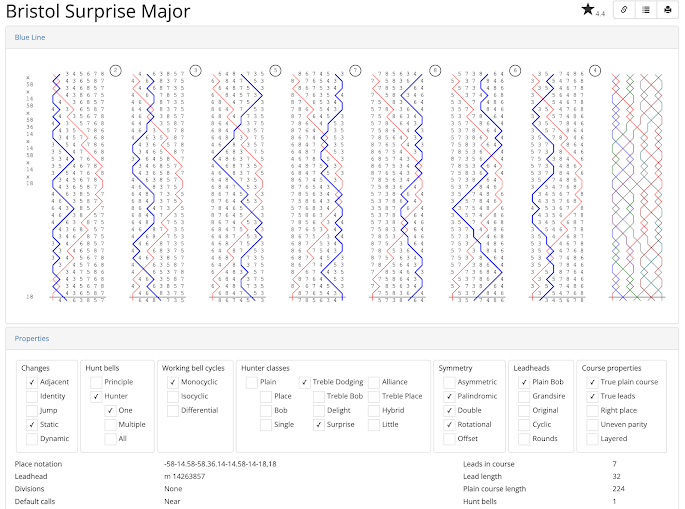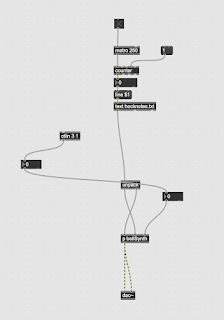Blog3: Bell Synthesiser
Blog3: Bell Synthesiser
Tuoye Ma
In music tech, new things keep coming up, giving musicians fresh ways to make sounds. One cool thing getting attention is the Bell Synthesiser. It mixes classic bell sounds with modern digital tricks, making all sorts of cool noises.
What's the Bell Synthesiser?
It's like a digital bell machine. Instead of metal vibrating, it uses computer smarts to make bell sounds. You can adjust slightly and play with the sounds in lots of ways.
Image1: This is a picture about the model of bell.
Image2: This is a typical synthesiser
How Does It Work?
Making bell sounds on a computer means copying how real bells sound. This includes stuff like the tone, how long the sound lasts, and where it feels like it's coming from. Smart computer tricks make it sound just like real bells.
What Can You Do with It?
You can make all kinds of bell sounds with it. Big church bells, jingly sleigh bells, or mystical Tibetan singing bowls. You've got control over things like pitch, how long the sound lasts, and where it feels like it's coming from. So, you can make lots of different sounds.
Where Can You Use It?
You can plug it into your computer or use it on stage. It works with other music stuff too. It makes your music sound cooler and adds more feeling to it.
What's Next?
People keep making the Bell Synthesiser better. They're making new sounds and adding more cool features. It's gonna be even more awesome in the future.
Why's It Cool?
It's a mix of old and new. It keeps the coolness of old bells but adds new digital stuff. It's like connecting the past and the future in music.
FM Synthesiser
FM Synthesiser is a music production technology that creates a variety of sounds, such as music and special effect sounds. It synthesises new sounds by changing different frequencies of sounds. In simple terms, it produces new sounds by having one sound frequency affected by another. By adjusting the frequency and intensity of the signal that affects the frequency of the sound, a variety of tones and sound effects can be created. FM synthesisers are popular in electronic music because they can produce many different sounds and can be controlled in real time by adjusting the parameters to create unique musical effects. Besides, it would be convenient to be used in bell synthesiser.
In short, the Bell Synthesiser isn't just for making music—it's about exploring new sounds and working together. It's like taking old bells and making them sound fresh with the help of computers. It's all about getting creative and imagining new stuff in music.
Examples
Here is the link of the first video: https://youtu.be/1HsPVHnk3zg?si=Cg5d9fiRDL8TY7Lu
This video elaborates how to create sounds like bells by synthesiser.
Here is the link of the second video: https://www.youtube.com/watch?v=ajJUagsNETY
This synthesis tutorial explains the basics of frequency modulation (FM) synthesis and shows how to make a bell sound.
References
Physical modelling techniques for the dynamical characterisation and sound synthesis of historical bells
This paper discusses methods for studying and recreating the sounds of historical bells using physical techniques. Essentially, it explores ways to use computers and mathematical models to understand how bells vibrate and produce sound, and then recreate those sounds digitally. By doing this, researchers can gain insights into the characteristics and history of different types of bells, and even simulate the sounds of bells that may no longer exist. It's like using technology to elaborate ancient bells and bring their unique sounds back to life.
The Csound book: perspectives in software synthesis, sound design, signal processing, and programming
This book is all about Csound, which is like a software toolbox for creating and playing with sounds on computers. It helps you do innovative stuff like making music, designing sound effects, and adjust audio slightly in all sorts of ways. The book teaches you how to use Csound to make sounds and music, and also how to write code to control how those sounds are made and changed. Basically, it's a guide for anyone interested in playing around with sound on their computer.
Cymatic Synthesis of a Series of Bells
This paper proposes cymatic synthesis as a novel method for analyzing and reproducing sounds, exploring geometric sound design by digitally fabricating stainless steel bells shaped by preceding sounds. The process, outlined in a modular model, reflects on initial findings to identify alternative mappings from sound to shape, demonstrating the creative potential of cymatic synthesis.
ADAPTIVE FM SYNTHESIS
This paper introduces an adaptive design method as an alternative to traditional FM synthesis, offering precise control over synthetic results while preserving gestural information. Another paper proposed cymatic synthesis, exploring geometric sound design by digitally crafting stainless steel bells shaped by preceding sounds. This process highlights the flexibility and creativity of cymatic synthesis.
EFFICIENT MODELING AND SYNTHESIS OF BELL-LIKE SOUNDS
This passage explores the acoustics of bells and similar instruments. It discusses their composition, tuning, and characteristic properties like irregular spectra and warble sounds. Additionally, it introduces computationally efficient synthesis methods, modal filterbanks, and inharmonic waveguides, relevant for music-related digital signal processing.
Creating Sounds from Scratch——A Practical Guide to Music Synthesis for Producers and Composers




Comments
Post a Comment